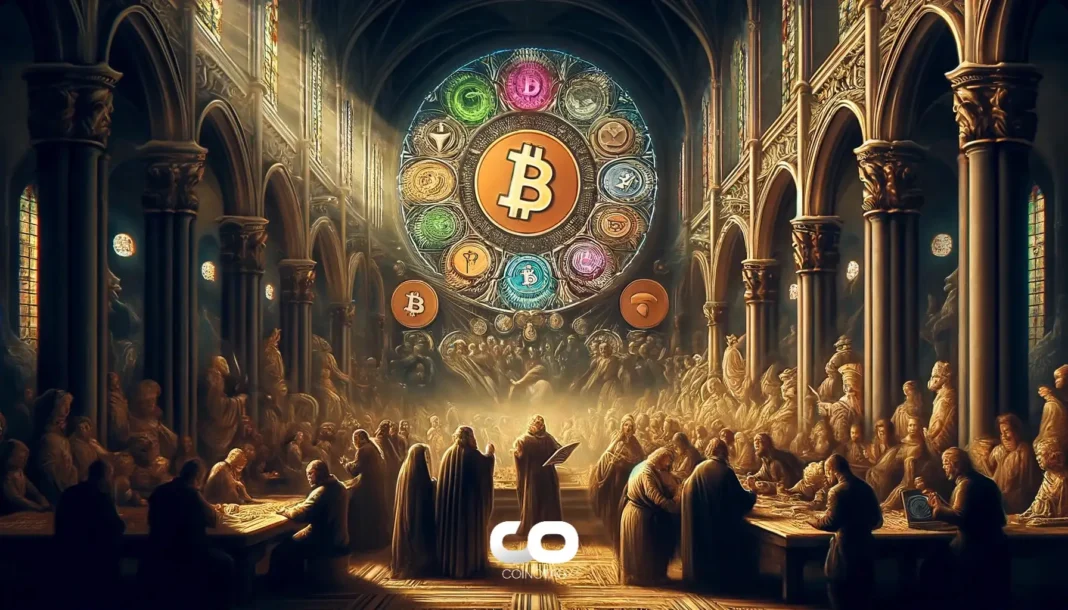Changpeng Zhao, known as CZ, criticized Peter Schiff’s new gold-backed token as a centralized product relying on third-party trust rather than true blockchain integration. He argued it fails to deliver on-chain gold, echoing why similar gold coins have not succeeded in crypto markets.
-
CZ’s critique highlights the token’s dependence on intermediaries for redemption, undermining blockchain’s core principles.
-
Schiff’s token allows app-based gold purchases, blockchain transfers, and physical redemptions with debit card spending options.
-
Gold prices recently dropped 6% over two days, losing $2.5 trillion, yet remain up 55% yearly amid inflation concerns and potential Fed rate cuts.
Discover CZ’s sharp take on Peter Schiff’s gold-backed token and its crypto implications. Explore gold’s market volatility and why true blockchain assets matter. Stay informed on crypto trends—read more now.
What Did CZ Say About Peter Schiff’s Gold-Backed Token?
Changpeng Zhao, the former CEO of Binance, dismissed Peter Schiff’s newly announced gold-backed token as a centralized asset masquerading as cryptocurrency. In a post on X, CZ described it as “not on-chain gold” but rather a “trust-me-bro” token that depends on a third party to deliver physical gold in the future. He emphasized that this reliance on intermediaries is why gold-backed coins have failed to gain traction in the crypto space.
How Does Peter Schiff’s Gold Token Work?
Peter Schiff unveiled his gold-backed token during an interview on the ThreadGuy podcast, positioning it as a bridge between traditional gold and digital convenience. Users can purchase and store physical gold in a secure vault via a dedicated app, transfer ownership seamlessly on a blockchain, or redeem it for actual metal bars. The token also integrates debit cards linked to holdings, enabling everyday spending backed by gold’s value without losing its tangible essence.
Schiff aims to modernize gold ownership, making it easier to hold and use in a digital economy while preserving its role as a store of value. According to data from market analysts, this approach addresses barriers like storage and transport that have historically limited gold’s accessibility. However, critics like CZ argue that the involvement of custodians introduces the same vulnerabilities as traditional finance, such as management changes or geopolitical disruptions that could delay redemptions even decades later.
Industry experts, including those from CryptoQuant, note that while tokenized assets represent a growing segment—valued at over $10 billion in 2024—success hinges on genuine on-chain verification. Schiff’s token, stored off-chain in vaults, relies on the issuer’s promise, which echoes past failures of gold-pegged stablecoins that collapsed due to redemption issues during market stress.
Frequently Asked Questions
What Makes CZ’s Criticism of Schiff’s Token Significant for Crypto Investors?
CZ’s remarks underscore a key debate in cryptocurrency: the difference between decentralized blockchain assets and centralized promises. For investors, this highlights risks in tokenized real-world assets, where trust in issuers can lead to liquidity issues during crises. As a prominent voice in crypto, CZ’s view influences sentiment, reminding users to prioritize verifiable on-chain holdings over hybrid models.
Why Did Gold Prices Drop Recently Despite Schiff’s Optimism?
Gold experienced a sharp 6% decline over two days, shedding $2.5 trillion in market value, its worst drop since 2013, following a 60% yearly surge driven by inflation fears. Analysts from CryptoQuant attribute this to overbought technical indicators signaling a market reset. Even with the pullback to around $4,090 per ounce, gold’s 55% year-to-date gain persists, bolstered by expectations of Federal Reserve rate cuts before year-end.
Key Takeaways
- CZ’s Dismissal: Changpeng Zhao labels Schiff’s gold token as centralized, not truly on-chain, due to third-party redemption reliance, explaining gold coins’ lack of crypto adoption.
- Schiff’s Renewed Attacks: Peter Schiff reiterated Bitcoin’s lack of value, predicting its zero price amid a sovereign debt crisis, while forecasting gold above $4,000 and a return to gold standards.
- Market Volatility Insight: Gold’s recent plunge erases gains but maintains yearly strength; investors should monitor Fed policies and central bank gold shifts for future trends.
Conclusion
In the ongoing clash between crypto pioneers like Changpeng Zhao and gold advocates like Peter Schiff, the debate over true blockchain integration in tokenized assets like the gold-backed token remains central. CZ’s critique emphasizes decentralization’s importance, while Schiff’s vision seeks to blend gold’s stability with digital utility amid predictions of economic turmoil and hyperinflation. As gold navigates volatility with a substantial yearly uptrend, crypto enthusiasts are encouraged to evaluate assets based on verifiable trustlessness. For deeper insights into these dynamics, explore more on emerging blockchain innovations.





